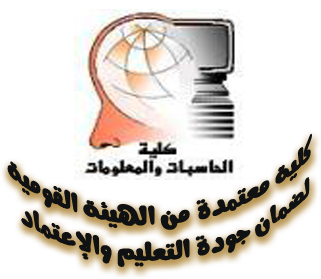The Bioinformatics program aims to provide the students with:
- Exploiting opportunities created by technology innovations
- Understanding and addressing information requirements
- Designing and managing enterprise architecture
- Identifying and evaluating solution and sourcing alternatives
- Securing data and infrastructure
- Understanding, managing and controlling IT risks
- Managing and analyzing biological data.
Graduate attributes
The Bioinformatics program is designed to provide students with the foundations of the discipline as well as the opportunity of specialization. After successfully completing the Information systems program, the graduate should be able to:
- Recognize problems that are amenable to computer information systems and knowledge of the tools necessary for solving such problems.
- Define the fundamentals of Bioinformatics.
- Manage Bioinformatics databases.
- Develop solutions for Bioinformatics applications.
- Apply the fundamentals of System Development Life Cycle (SDLC).
- Manage and exploit organizational data and information, design data and information models, and manage information systems development resources and projects.
- Implement solutions, including the use of appropriate programming languages, web-based systems and tools, design methodologies, and database systems.
- Apply the principles of an effective information management, information organizations, information mining, and information-retrieval skills to information of various kinds, including text, images, sound, and video.
- Define the fundamentals of intelligent information systems technologies.
- Specify, design, and implement computer-based information systems, and evaluate them in terms of general quality attributes and possible trade offs presented within the given problem.
- Apply Information Systems solutions to functional, inter-organizational, operational, managerial, and executive problems and opportunities.
- Describe characteristics of various components of information systems, use the appropriate tools and techniques to analyze, design, and construct information systems.
Knowledge and Understanding
At the end of this program, graduates should be able to:
- Demonstrate basic knowledge and understanding the core of analysis, algebra, applied mathematics and statistics.
- Demonstrate strong knowledge of bioinformatics.
- Demonstrate strong skills in biological database management systems.
- Describe the principles and techniques of a number of application areas informed by the research directions of bioinformatics.
- Explain the broad context within which bioinformatics including issues such as quality and reliability.
- Identify bioinformatics applications, such as forensics, personalized medicine, agriculture, drug discovery, nanoinformatics, and biodiversity informatics, etc.
- Identify selected specialist fields at the forefront of information systems.
- Discuss the principles of Information communication.
- Describe the challenges inherent in the maintenance and evolution of software systems, and the techniques and best practices currently available for dealing with them.
- Discuss some aspects of object-oriented analysis and design.
- Explain decision support tools and systems.
- Identify various approaches to Management Sciences (MS), such as Project Management.
- Interpret and analyze data qualitatively and/or quantitatively.
- Demonstrate strong knowledge of the fundamentals of programming and the construction of computer-based systems, data structures, bioinformatics algorithms, software engineering techniques, and information retrieval.
- Demonstrate a deep knowledge of structural bioinformatics
Intellectual Skills
Once the students successfully complete this program, our graduates should be able to:
- Define traditional and nontraditional information systems problems, set goals towards solving them, and observe results.
- Perform comparisons between (methods, techniques... etc.).
- Identify attributes, components, relationships, patterns, main ideas, and errors.
- Summarize the proposed solutions and their results.
- Restrict solution methodologies upon their results.
- Establish criteria and verify solutions.
- Identify a range of solutions and critically evaluate and justify proposed design solutions.
- Solve information systems problems with pressing commercial or industrial constraints.
- Generate an innovative design to solve a problem containing a range of commercial and industrial constraints.
- Perform problem analysis from written descriptions.
- Derive requirements specifications from an understanding of the problems (analysis, synthesis).
- Create and/or justify designs to satisfy given requirements (synthesis, evaluation, application).
- Solve a decision model with appropriate techniques.
- Solve complex problems within and between enterprises.
- Perform improvement of a system that benefits stakeholders.
- Recognize the professional, moral and ethical issues involved in the exploitation of Information Technology and be guided by their adoption, reflect on issues of professional practice within the discipline.
Contact Us
se_fci@aun.edu.eg

